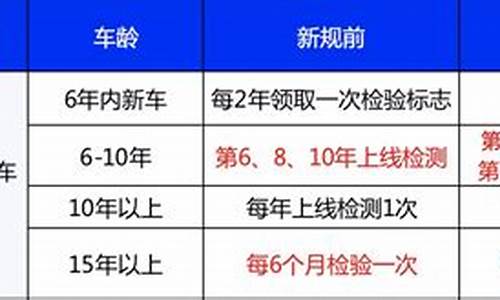the norman conquest
大家好,今天我想和大家分享一下我在“the norman conquest”方面的经验。为了让大家更好地理解这个问题,我将相关资料进行了整理,现在就让我们一起来学习吧。
1.A history of the English language
2.英语的发展历史
3.英语发明于哪一年
4.法律英语术语:common law
5.The process and influence of the Noman conquest

A history of the English language
看看是不是这篇A Brief History of the English Language English is a member of the Indo-European family of languages. This broad family includes most of the European languages spoken today. The Indo-European family includes several major branches: Latin and the modern Romance languages (French etc.); the Germanic languages (English, German, Swedish etc.); the Indo-Iranian languages (Hindi, Urdu, Sanskrit etc.); the Slavic languages (Russian, Polish, Czech etc.); the Baltic languages of Latvian and Lithuanian; the Celtic languages (Welsh, Irish Gaelic etc.); Greek. The influence of the original Indo-European language can be seen today, even though no written record of it exists. The word for father, for example, is vater in German, pater in Latin, and pitr in Sanskrit. These words are all cognates, similar words in different languages that share the same root. Of these branches of the Indo-European family, two are, as far as the study of the development of English is concerned, of paramount importance, the Germanic and the Romance (called that because the Romance languages derive from Latin, the language of ancient Rome). English is a member of the Germanic group of languages. It is believed that this group began as a common language in the Elbe river region about 3,000 years ago. By the second century BC, this Common Germanic language had split into three distinct sub-groups:East Germanic was spoken by peoples who migrated back to southeastern Europe. No East Germanic language is spoken today, and the only written East Germanic language that survives is Gothic. North Germanic evolved into the modern Scandinavian languages of Swedish, Danish, Norwegian, and Icelandic (but not Finnish, which is related to Hungarian and Estonian and is not an Indo-European language). West Germanic is the ancestor of modern German, Dutch, Flemish, Frisian, and English. Old English (500-1100 AD) CLICK HERE TO SEE A MAP OF ANGLO-SAXON ENGLANDWest Germanic invaders from Jutland and southern Denmark: the Angles (whose name is the source of the words England and English), Saxons, and Jutes, began to settle in the British Isles in the fifth and sixth centuries AD. They spoke a mutually intelligible language, similar to modern Frisian - the language of the northeastern region of the Netherlands - that is called Old English. Four major dialects of Old English emerged, Northumbrian in the north of England, Mercian in the Midlands, West Saxon in the south and west, and Kentish in the Southeast. These invaders pushed the original, Celtic-speaking inhabitants out of what is now England into Scotland, Wales, Cornwall, and Ireland, leaving behind a few Celtic words. These Celtic languages survive today in the Gaelic languages of Scotland and Ireland and in Welsh. Cornish, unfortunately, is, in linguistic terms, now a dead language. (The last native Cornish speaker died in 1777) Also influencing English at this time were the Vikings. Norse invasions and settlement, beginning around 850, brought many North Germanic words into the language, particularly in the north of England. Some examples are dream, which had meant 'joy' until the Vikings imparted its current meaning on it from the Scandinavian cognate draumr, and skirt, which continues to live alongside its native English cognate shirt.The majority of words in modern English come from foreign, not Old English roots. In fact, only about one sixth of the known Old English words have descendants surviving today. But this is deceptive; Old English is much more important than these statistics would indicate. About half of the most commonly used words in modern English have Old English roots. Words like be, water, and strong, for example, derive from Old English roots.Old English, whose best known surviving example is the poem Beowulf, lasted until about 1100. Shortly after the most important event in the development and history of the English language, the Norman Conquest.
The Norman Conquest and Middle English (1100-1500) William the Conqueror, the Duke of Normandy, invaded and conquered England and the Anglo-Saxons in 1066 AD. The new overlords spoke a dialect of Old French known as Anglo-Norman. The Normans were also of Germanic stock ("Norman" comes from "Norseman") and Anglo-Norman was a French dialect that had considerable Germanic influences in addition to the basic Latin roots. Prior to the Norman Conquest, Latin had been only a minor influence on the English language, mainly through vestiges of the Roman occupation and from the conversion of Britain to Christianity in the seventh century (ecclesiastical terms such as priest, vicar, and mass came into the language this way), but now there was a wholesale infusion of Romance (Anglo-Norman) words.The influence of the Normans can be illustrated by looking at two words, beef and cow. Beef, commonly eaten by the aristocracy, derives from the Anglo-Norman, while the Anglo-Saxon commoners, who tended the cattle, retained the Germanic cow. Many legal terms, such as indict, jury , and verdict have Anglo-Norman roots because the Normans ran the courts. This split, where words commonly used by the aristocracy have Romantic roots and words frequently used by the Anglo-Saxon commoners have Germanic roots, can be seen in many instances.Sometimes French words replaced Old English words; crime replaced firen and uncle replaced eam. Other times, French and Old English components combined to form a new word, as the French gentle and the Germanic man formed gentleman. Other times, two different words with roughly the same meaning survive into modern English. Thus we have the Germanic doom and the French judgment, or wish and desire.It is useful to compare various versions of a familiar text to see the differences between Old, Middle, and Modern English. Take for instance this Old English (c. 1000) sample:F?0?3der ure ?0?6u ?0?6e eart on heofonum
si ?0?6in nama gehalgod tobecume ?0?6in rice gewur?0?6e ?0?6in willa on eor?0?8an swa swa on heofonum
urne ged?0?3ghwamlican hlaf syle us to d?0?3g
and forgyf us ure gyltas swa swa we forgyfa?0?8 urum gyltendum
and ne gel?0?3d ?0?6u us on costnunge ac alys us of yfele so?0?6lice. Rendered in Middle English (Wyclif, 1384), the same text is recognizable to the modern eye:Oure fadir ?0?6at art in heuenes halwid be ?0?6i name;
0?6i reume or kyngdom come to be. Be ?0?6i wille don in her?0?6e as it is doun in heuene.yeue to us today oure eche dayes bred.
And foryeue to us oure dettis ?0?6at is oure synnys as we foryeuen to oure dettouris ?0?6at is to men ?0?6at han synned in us.
And lede us not into temptacion but delyuere us from euyl. Finally, in Early Modern English (King James Version, 1611) the same text is completely intelligible: Our father which art in heauen, hallowed be thy name.
Thy kingdom come. Thy will be done in earth as it is in heauen.
Giue us this day our daily bread.
And forgiue us our debts as we forgiue our debters.
And lead us not into temptation, but deliuer us from euill. Amen. For a lengthier comparison of the three stages in the development of English click here!In 1204 AD, King John lost the province of Normandy to the King of France. This began a process where the Norman nobles of England became increasingly estranged from their French cousins. England became the chief concern of the nobility, rather than their estates in France, and consequently the nobility adopted a modified English as their native tongue. About 150 years later, the Black Death (1349-50) killed about one third of the English population. And as a result of this the labouring and merchant classes grew in economic and social importance, and along with them English increased in importance compared to Anglo-Norman. This mixture of the two languages came to be known as Middle English. The most famous example of Middle English is Chaucer's Canterbury Tales. Unlike Old English, Middle English can be read, albeit with difficulty, by modern English-speaking people.By 1362, the linguistic division between the nobility and the commoners was largely over. In that year, the Statute of Pleading was adopted, which made English the language of the courts and it began to be used in Parliament.The Middle English period came to a close around 1500 AD with the rise of Modern English.
英语的发展历史
苹果酒的历史
关于埃及搬砖工的事迹由于年代久远已无法考证,但是在14世纪的英国农场,那里的农场主们却是真真的将Cider,即苹果酒作为工资的一部分大大方方地支付给工人,工人们每天大约能获得两升苹果酒,最多可以用来代替五分之一的工资。这样的传统一直延续到1887年。
看着英国人民沉迷苹果酒日渐消瘦,英国政府终于忍不住通过了一项新的交易法案,将拿苹果酒抵扣工资的方式废止,所有的工资必须以货币的形式发放给工人。至此,苹果酒正式结束了500年作为硬通货的历史。
家庭装苹果酒(一瓶约2品脱)
直到今天,英国的苹果酒人均消费量依然“熊”居全球第一,苹果酒是英国酒吧饭店的酒单必备,也是酒类专卖店的常客。英国本土有将近500家苹果酒制造商,超过350种酿酒苹果,这甚至比啤酒的种类还有多。英国苹果酒年产量为50万吨左右,占了整个欧洲60%以上,也算是全球生产苹果酒的扛把子,甚至超过了将苹果酒引入英国的法国。而法国作为老牌的葡萄酒生产国,酒桌上葡萄酒的头牌地位确实极难撼动。
诺曼底的苹果酒酒农
公元前55年,罗马人入侵大不列颠时,为了让退伍军人能定居下来,最后竟然在英国建起了苹果园,额,够拼的。当时的思路大概是:喝断片儿就不会吵着回家了。。。然而说到苹果酒真正扎根于英国的契机,则不得不说说历史上著名的Norman Conquest,诺曼征服事件(公元1066年,也埋下了之后英法百年战争的导火索)。
诺曼底公爵威廉,后加冕为英国国王—征服者威廉一世William the Conqueror,在他对英国的统治期间,不仅推进了英国的封建化过程,也大大推动了苹果酒产业在英国的发展。在法国人带来了适合酿酒的苹果品种Pearmain和Corstard等后,肯特郡,萨默塞特和汉普郡等地的苹果园也开始逐渐配备了自己的压榨机。
随之而来还有古英语的发展进入了低谷,法语成为了诺曼征服后的官方语言,英语中开始夹杂大量的法语词汇(多为政治,法律,宗教和食品方面的词),从英语中的苹果酒Cider一词的拼写亦不难看出法语词Cidre的原身。
征服者威廉一世William the Conqueror与他的迷の发际线
关于苹果酒的起源,通常认为它是最早出现于公元1世纪的Pliny时代的地中海盆地,是人们在保存苹果汁过程中不经意得到的一种饮料(我才不会说是不小心把好好的苹果汁给放坏了…感觉有葡萄酒既视感?)。公元2世纪,苹果酒逐渐流行到了欧洲,在公元4世纪时,St. Jerome用“Sicera”(拉丁语,意为醉人的饮品)来描述苹果汁制作出的这种含酒精饮料。
传统发酵中的苹果酒(博物馆模型)
但它的真正兴盛在是在中世纪早期(公元8世纪)的法国西北部的诺曼地Normandie和布列塔尼Bretagne地区,以及西班牙北部的巴斯克Basque,它临近和法国交界的比利牛斯山脉,巴斯克菜系亦深深的影响着法国西南部的饮食习惯。
西班牙的巴斯克地区
向来把法国地图当葡萄酒产区图来画的作者发现,在临近大西洋的西北角(著名的卢瓦尔河谷下方),似乎并没有什么葡萄酒酒庄出没。而究其原因则是当地潮湿多雨的气候并不适宜生产高品质的葡萄酒(作者在诺曼底的苹果酒酒庄实习一个暑假之后神奇的捂白了…再看着从葡萄园出来的小伙伴们黑成炭,心情真是美如画),当地修道士机智的发现苹果也能酿出来各种各样香醇的美酒。
看来各国修道士除了天天念经似乎都特别钟情于酿酒这一副业,得空就倒腾倒腾酒,比如葡萄牙修道士研发出来的樱桃利口酒Ginja:圣诞特辑?| 除了煮红酒,今天还可以喝什么。于是甜甜的酸酸的,有营养味道好,还带汽的低度(通常在2-8度)苹果酒就慢慢流行开来,最终走向了它的人生巅峰——成为全球产量第二的果酒(仅次于葡萄酒)。
玲琅满目的苹果酒Cider
酿酒苹果
苹果作为温带水果之王,种类繁多,可按其用途分为鲜食苹果(法语:Pomme de table),酿酒苹果(法语:Pomme à cidre)及烹调苹果(法语:Pomme à cuire)。中国的苹果总产量占全球的一半,可谓当之无愧的苹果王国,但其中绝大部分都是鲜食苹果。
常见的19种鲜食苹果
在法国仅仅是用于酿酒的苹果品种就又800多种,其中常见的的有500多种。能被称为酿酒苹果,需要考虑Brix,比重,单宁含量,总酸及出汁率等多项因素。在酿酒苹果的大家庭中,按照各自的特长,我们可以简单粗暴的将它们分为三大帮派:
?甜苹果(法语:Pomme douce):掌管苹果酒的酒精及残糖含量
?酸苹果(法语:Pomme acide):掌管苹果酒的酸度,保证酒体的糖酸平衡
?苦苹果(法语:Pomme amère):掌管苹果酒的单宁等多酚含量,在品尝者口中撑起一片天
因此,要酿出一瓶口感平衡的苹果酒,仅靠单一品种的苹果是几乎不可能的。例如在法国,就对各产区不同种类的苹果酒的品种及其比例作出了规定(类似AOP葡萄酒对品种的要求),因此市面上买到的苹果酒中至少含有2种或2种以上的苹果。
酒农将不同苹果混合压榨
苹果酒的分类及其工艺
按照苹果酒的甜度:
?甜型(Doux):酒中残糖高于42g/L,通常酒精度数在2到3度之间
?半干型(Demi-sec):酒中残糖在18到42g/L,通常酒精度数在3到4度之间
?干型(Brut):酒中残糖在18g/L以下,通常酒精度数在5到6度之间,个别甚至能达到8度
作者实习酒庄的Brut,Demi-sec和Doux型3款苹果酒(从右至左)
按照苹果酒的颜色:
?普通苹果酒Cidre:受到不同压榨果汁的方式,发酵工艺及原料的影响,酒体的颜色到从淡黄到金琥珀甚至深褐色
?桃红苹果酒Cidre Rosé:桃红苹果酒因为采用了少数能浸渍出淡淡红色的酿酒苹果品种,酒体颜色呈现出清新脱俗的浅桃红色,产量稀少,实属Cider中的卖萌装逼两不误的利器
高颜值的桃红苹果酒
不过,也有“无良”商家将正常苹果酒脱色之后加入覆盆子糖浆勾兑,作者不幸尝到一次,Demi-sec左右的甜度,讲真作为覆盆子味儿的苹果酒来说简直无懈可击。
某覆盆子味儿的桃红苹果酒
按照苹果酒的酿造工艺:
?传统工艺酿造的苹果酒:分拣苹果—切碎去核—榨汁—清汁低温发酵—澄清过滤—(陈酿)—调配勾兑—装瓶前人工充入二氧化碳(讲人话就是:白葡萄酒发酵工艺多了一个充二氧化碳的步骤)
事实上,陶瓷广口杯才是法国品尝苹果酒的传统容器
需要注意的是,苹果不像葡萄属于浆果类易于压榨出汁率高,因此需要在压榨前以迅雷不及掩耳之速度在相对密闭的环境中切碎。但是无论我们如何的小心翼翼,苹果是公认的特别容易氧化,因此苹果酒和白葡萄酒比起来似乎永远都深了一个色调(亦可参考水晶葡萄和苹果汁的颜色差别)因此这个人工充二氧化碳步骤,有人猜测除了口感的需求,也许也是为了能够更好的防止苹果酒被氧化,因此市面上的苹果酒都是有气泡的,只有极少数无气的(请自行脑补苹果汁氧化褐变后,华丽丽的雾霾金)。
每年收获季时热火朝天的压榨场面
?苹果酒中的高档货:传统法苹果酒
对于全球第一矫情的法国人来讲,人工充入二氧化碳的苹果酒显然是不够高大上的。随着精酿啤酒之风刮遍大江南北,通过借鉴香槟的瓶内二次发酵工艺,让苹果酒也能优雅的瓶内二次发酵产生气泡。然而人在做天在看,用这种方法生产出来的苹果酒再适当的陈酿一阵子,价格也摇身一变翻了两三翻儿。
采用香槟发酵法的苹果酒
苹果酒自然也不是法国人的专利,英国、南非、美国、澳洲等地都有大量出产Cider,其中著名品牌就包括来自南非的Savanna干型苹果酒,这款苹果酒,历经三重过滤、两次冷却,最终萃取保留苹果汁中最为精华的部分,100%封存苹果的天然果香,要不要猜猜看是用哪种酿酒苹果制作的?
Savanna干型苹果酒
除了上述苹果酒外,在法国Calvados地区,人们将苹果汁蒸馏之后,生产出了闻名世界的苹果白兰地。喝不了烈酒的萌妹纸们也不要走开,不妨试试在你们的香草冰淇淋里加一点儿Calvados苹果白兰地,撒上些杏仁碎,淋上巧克力酱,味感就立即丰富了起来。老司机们则可以听着“美酒加咖啡”,在这寒冷的冬天在家照着Irish Coffee的做法调一杯Normandy Coffee,再配上一小块Nutella松饼,也是挺惬意的。
用于煮爱尔兰咖啡的装备
正如葡萄酒世界中有干邑白兰地和夏郎德皮诺酒Pineau des Charentes,苹果酒中亦有卡尔洛斯Calvados白兰地和Pommeau利口酒。后者均是向未发酵/正在发酵果汁中加入对应的白兰地而得到的加强型利口酒。酒精度数在18度左右的Pommeau,拥有浓郁的果香和甜蜜的口感,犹如苹果酒中的女汉子,柔中带刚,饭前一小杯胃口好,饭后一小杯配甜点,实属居家旅行必备良酒。
苹果酒白兰地
最后要隆重介绍苹果酒家族中的冰山美人—冰苹果酒(法语:Cidre du glace),它的原料需要在零下4度的环境中通过结冰的方式脱去部分水分,所以“冰苹果”的含糖量比普通苹果更高,才能够不加糖不加浓缩果汁的情况下生产出天然的甜型酒。怎么样?听上去是不是就觉得挺高冷的,放心,它喝起来也一样挺冷的(?因为通常冰酒含糖量较高,适宜的饮用温度相对偏低,在6到8度左右)。
寒冬中,手工采苹果的工人
英语发明于哪一年
English, the United Kingdom of Great Britain and Northern Ireland, the United States of America's official language, but also by many former British colony, as well as countries of the Commonwealth as a common language or a second language, according to the English pronunciation, vocabulary and grammatical differences in the characteristics of English into Britain and the United States英语.
English Source:
English belong to the Indo-European family of Germanic languages of West Germanic, from the ancient continent of migrants from Europe to Great Britain's Anglo-Saxons and Jutes Germanic tribes who said the language evolved, through the British colonial activities spread to All over the world. According to the English-speaking size, the English may be the world's fourth-largest or third largest language (Statistics for 1999 were 322,000,000), but it is the world's most extensive second language. Last two centuries, Britain and the United States in the cultural, economic, military, political and scientific leadership in making English a universal language. English is the working language of the United Nations.
And English is the closest to the Frisian, the language was still in the Netherlands in the northern province of Friesland about 50 million people. Some people think that Scotland and the English language is close to an independent language, and some people think it is a dialect of English. Scots traditionally been considered as a separate language, and some people even think that Ebonics is a separate language, but it is very controversial. In addition to the Frisian closest to the English outside the Netherlands is in the eastern part of Germany and the northern lowlands of the Saxon. Other related languages include Dutch, Afrikaans and German. Norman conquest of England in the 11th century, a lot of French words, greatly enriched the English language.
English history:
Early Germanic tribes people (vrisi race, ethnic Anglo-Saxons and Jutes ethnic group) immigration to England, and English is the language from their inherited changes. According to the "Anglo-Saxon Chronicle," recorded in the year 449 years or so, the British Isles King Vortigern (Vortigern) to invite the "Anglo relatives" to help his people against Pickett. In return, he gave the Anglo community in southeastern territory. He also sought further support, family-Saxon, Anglo ethnic Serbs and Jutes come. "Chronicle" documented the end of these "immigrants" have established the Kingdom of the seven: Innocent Bo Liya, Mercia, East Ang Battipaglia, Kent, Essex, Sussex, Wessex.
Germans after the invasion, the rule of the Celtic peoples, the main local language in Scotland, Wales, Cornwall and Ireland down to survive. These invaders of the language gradually formed the "Old English", and like most modern Frisian. English (England, English), England (England) and East Anglia (East Battipaglia Ang) is the three words were painted from the Anglo-term development of communities: Englisc, Angelcynn, Englaland.
Norman Conquest in 1066 after 300 years, the only French king of England. Therefore, a large number of French words into Old English, Old English itself has lost most of the twists and turns, for the evolution of Middle English. In 1500 about the Great Vowel over to Middle English to Modern English deformation. Old English literature's most famous works are "Beowulf" is the Middle English of "The Canterbury Tales."
Modern English in Shakespeare's prosperity and the beginning of the period, a number of scholars will be divided into early modern English and late Modern English, as the dividing line in 1800 or so. As in most parts of the world to the British occupation and colonization, the local language to a large extent, also influenced the development of English.
法律英语术语:common law
如要细说,根据分类,从公元450年-1100年间的西日尔曼语才真正是英语的起源。
年代 语言
公元前 居尔特语(几千年)
公元~450年 罗马人统治
450年~1100年 Old English(古英语)、西日尔曼语
1100年~1500年 Middle English(中世纪英语)
1066年 The Norman Conquest 以后
1500年~现代 Modern English(现代英语)
The process and influence of the Noman conquest
提到“English law”我们就会条件反射,联想到“common law”这个概念,甚至把两者误解为同一概念。其实,“English law”是“English law ”,“common law”是“common law”,“English common law”又是“English common law”。
汉语中,人们往往把“common law”说成是“普通法”、“习惯法”、“不成文法”、“判例法”,甚至有时在一定上下文中被当作了“事实上”的代名词——如:“common law marriage”就被说成是“事实婚姻”:“common law wife”便被说成是“事实上的妻子”。严格说,上述种种说法大多是人们对“common law”的——种诠释(“interpretation”),而不是什么翻译(“translation”)。其中可算作翻译的,唯“普通法”而已。
“common law”之译为“普通法”,似已“约定俗成”了,但是是否确切呢?在其尚未在广大读者间“约定俗成”前,尚不无商讨之实际意义。
形容词“common”具有:“共同的”、“普通的”、“粗俗的”、“低劣的”、“(数)共通的”、“(语)通(性)的”与“通(俗)的”等七类释义。按此,则“common law”之译作“普通法”,是于词典有据的了。但是,词典上不是有七类释义吗?此处译作“普通法”,采用的显然是第二类释义。然则,这样取义对不对呢?能不能另取他义,比如说取第一类释义而译作“共同法”呢?为什么“Common Market”译作“共同市场”,而不译作“普通市场”呢?
这就牵扯到一个翻译上“具体词义具体确定——具体词语具体翻译”的原则了。说得更明确一些:“common”一词在“common law”这一合成词中的具体涵义是什么?是“普通”还是“共同”?请看下列引文便知分晓:
1.
……the common law has in itself a number of historical sources which were, prior to Conquest, embodied in local custom. The unique contribution of the Norman Conquest, was to unify these local customs into one system of law common to all men, for this reason termed the "common law".
——Walker & Walker, The English Legal system, London l976, The English Legal system, London l976, p.3
2.
The common law is so called because it was commonly applied throughout the kingdom of England.
——You and the Law, Reader's Digest Association, Inc.,
由此可见,英国的“common law”是以其区别于前英国各地各种各样不统一的习惯而使之统一为在全国各地共同适用为其特征的,故汉语译之为“普通法”显然不如“共同法”之切合原意——哪怕译成“普遍法”也许也要比“普通法”略胜一筹吧。
以“普通法”译“common law”的另一个严重缺点,则在于其易滋歧义——“普通法”可以被误解为另一法学概念“特别法”的对立概念。 由此得出的体会是:
甲。 法律翻译工作要求译者不但是精通语言的,而且也是精通比较法学的;
乙。 约定俗成只是翻译诸规律之一而千万不能捧之为翻译的原则,更不能容忍它成为在翻译中实事求是、尊重科学、服从真理、从善如流的绊脚石。
Influence:
在1066年著名的诺曼征服(Noman conquest)之后,England出现了三语鼎立现象:
French became the official language used by the king and the Norman lords(法语成为官方语言, 国王和贵族们说的)
Latin become the principal tongue of church affairs and the universities(拉丁语成为教会语,和大学里说的语言)
the old English was spoken only by the common English people.(古英语成为普通人说的英语)
建议去买本'英语史'的书看看,里面什么都有了,有个系统的了解是最好的
Thus,Birtain was opened up to the whole European continent.
好了,今天关于“the norman conquest”的话题就讲到这里了。希望大家能够对“the norman conquest”有更深入的认识,并从我的回答中得到一些启示。如果您有任何问题或需要进一步的信息,请随时告诉我。
声明:本站所有文章资源内容,如无特殊说明或标注,均为采集网络资源。如若本站内容侵犯了原著者的合法权益,可联系本站删除。












